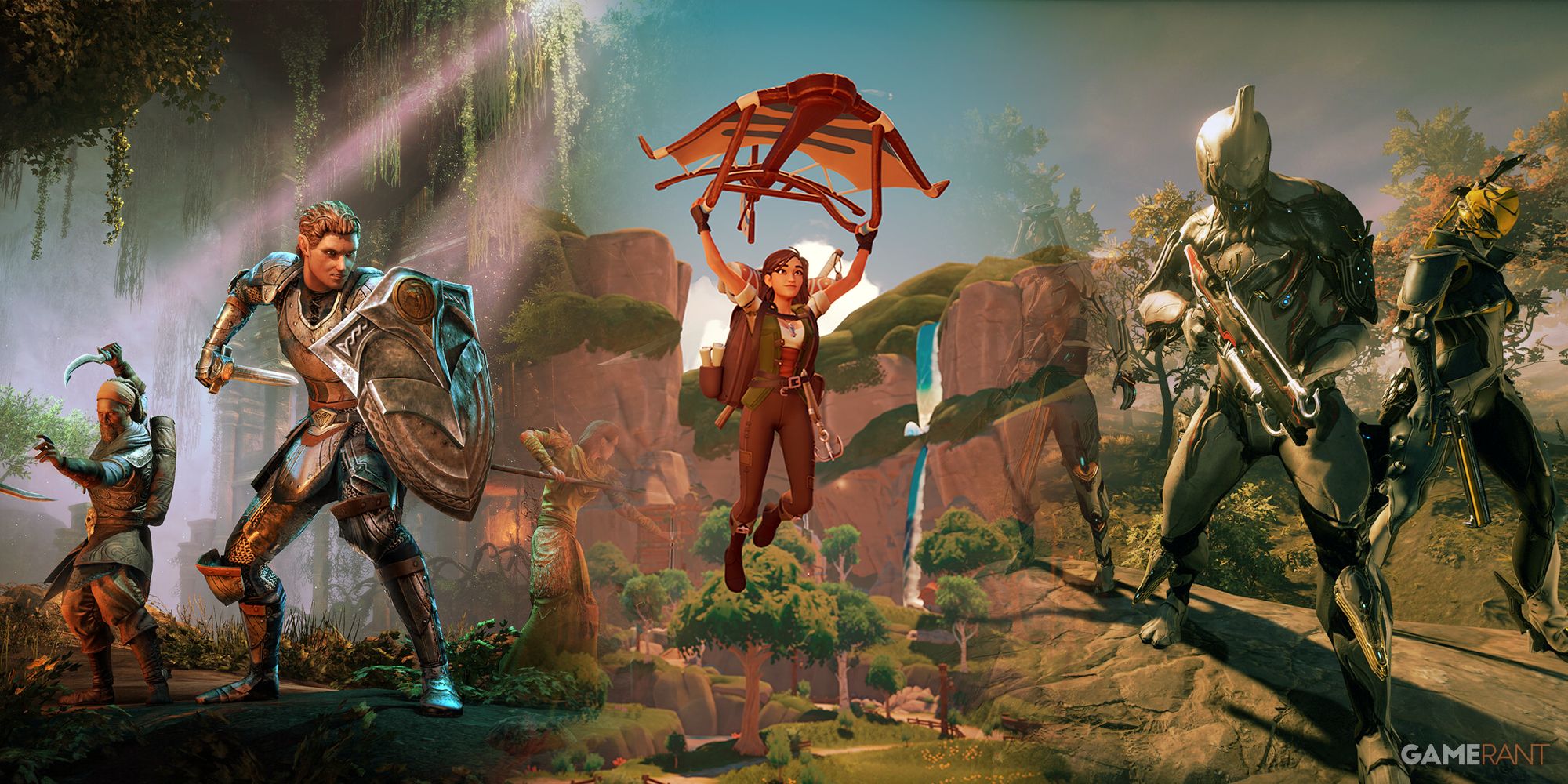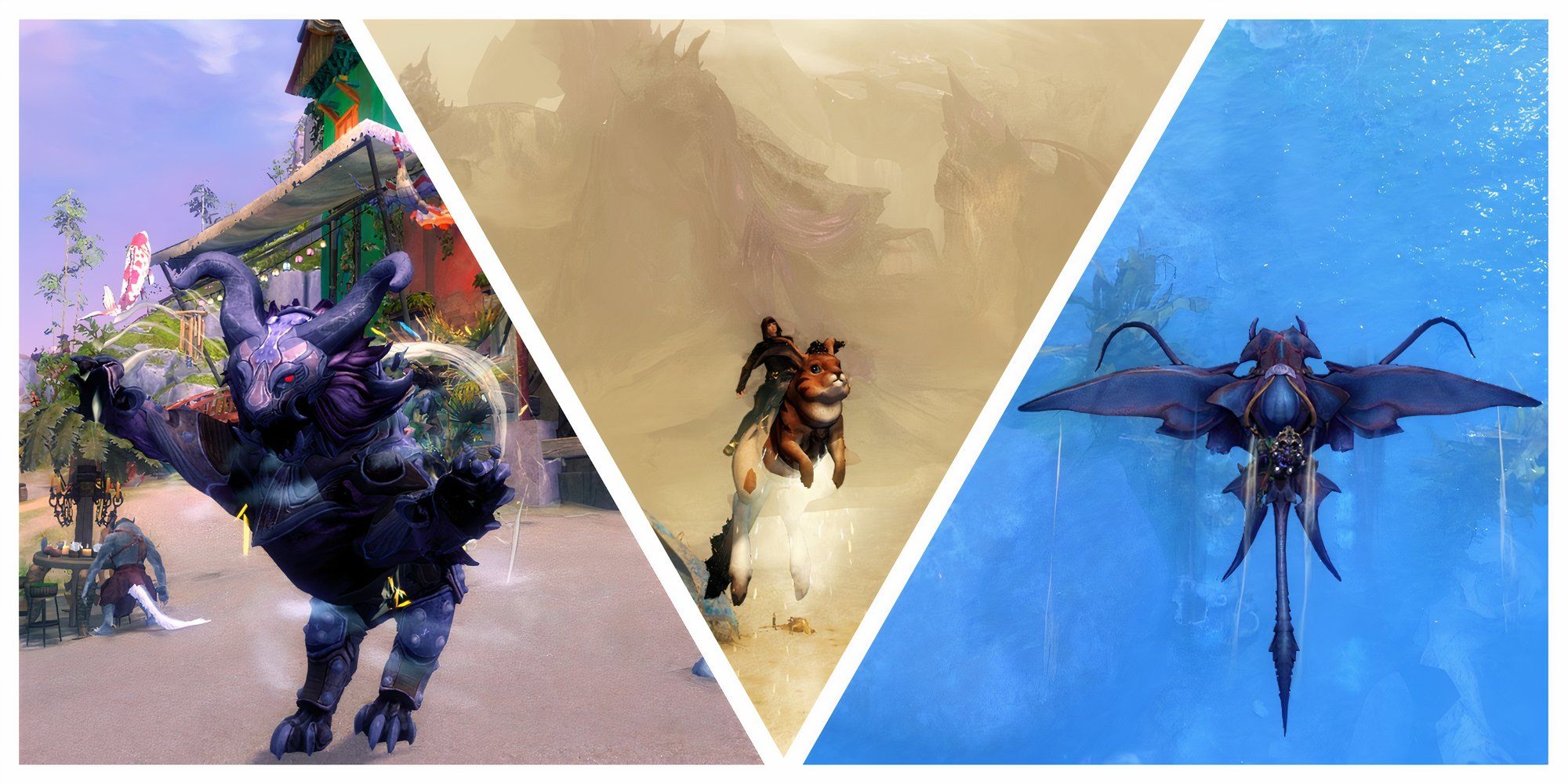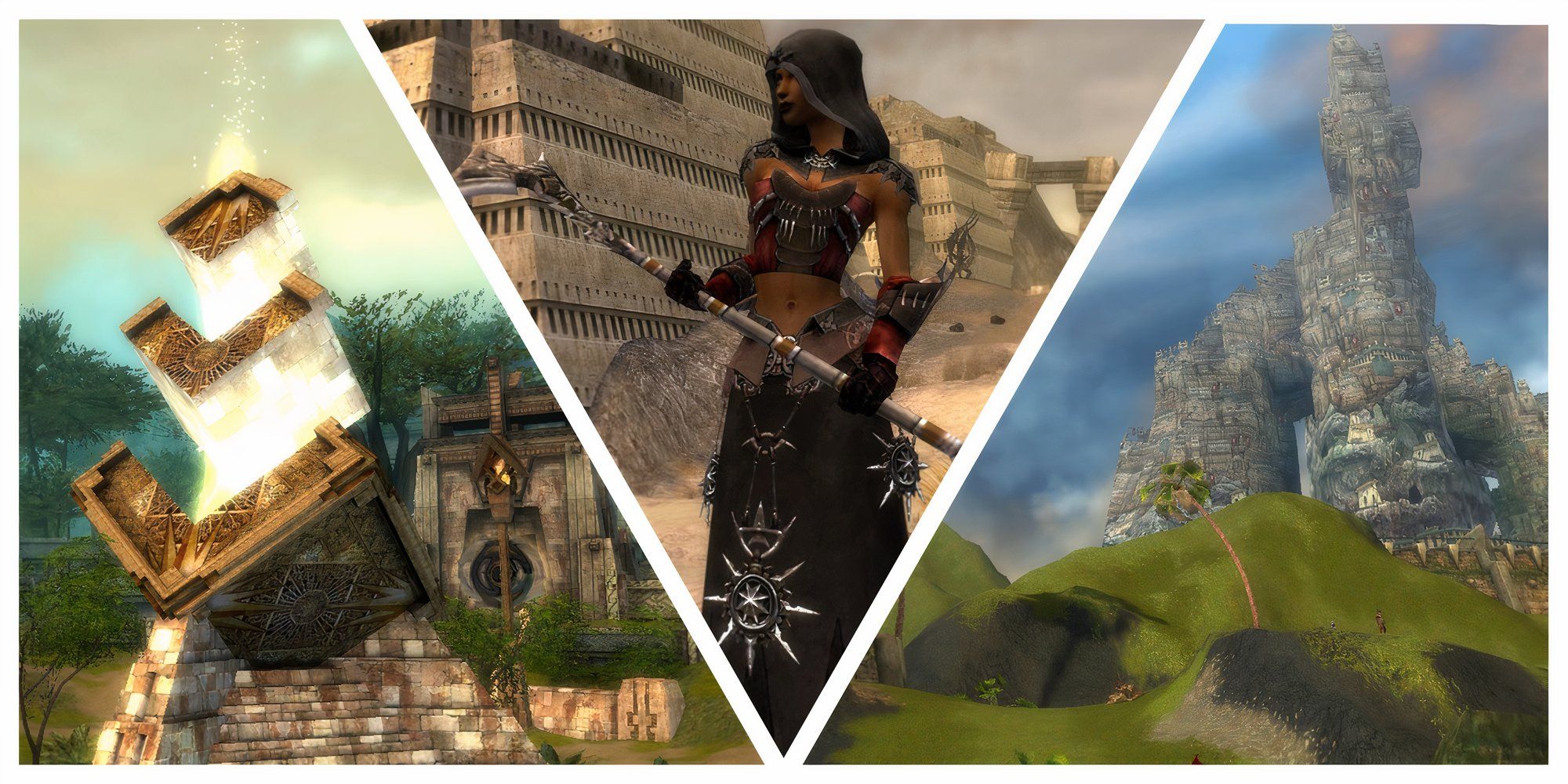
Key Takeaways
- ArenaNet should prioritize clear tutorials to ensure players understand essential mechanics early on.
- Guild Wars 3 should avoid laying down temporary content and ensure story continuity to prevent confusion among new and existing players.
- More cooperative gameplay could be encouraged by designing community-building moments and offering meaningful rewards beyond stats.
With the unexpected reveal that a third Guild Wars game is in the works, as confirmed by an NCSoft shareholder meeting in March 2024, many fans, both of the original and Guild Wars 2, are speculating about what a third entry could look like. The two games share the same lore and universe, but they ended up being very different from one another, each offering different gameplay and tonal differences due to ArenaNet’s willingness to innovate on old concepts and their insistence on creating an environment that encourages friendliness between players.
Related
5 Best MMOs For Creating An Overpowered Character
Many MMOs use lengthy character progression to increase play times. However, these MMOs welcome overpowered characters who make the game a cakewalk.
With two decades of experience developing online games, ArenaNet should pay close attention to a few areas while designing the MMO genre’s next big game-changer, Guild Wars 3. These points should stand whether they decide to model their next game on GW2, create a hybrid of their previous games, or take the series in a new direction entirely.
Putting Players Through Better Tutorials
Teaching New Players The Fundamentals
Guild Wars has always been an MMO that innovates in its gameplay, combat, and story structure, but it has never been particularly good at communicating its mechanics. For example, at level 80, many players are still unaware of dodge rolling, an essential end-game- mechanic, because Guild Wars 2 rarely stops players and makes them learn a mechanic. In Guild Wars, players rarely swapped out the skills they obtained right at the start of the game, compromising the excellent Magic The Gathering-esque design of the game’s build system.
Guild Wars 3 will likely introduce gamers to a whole new way to experience an online world, but how the game teaches players about important concepts will be crucial in not only allowing players to experience the game to its fullest but smoothing over tensions at end-game areas. Guild Wars 2 somewhat resolved this by making most of the game, even much of the expansion content, fairly easy to complete. This allows players to steamroll content solo and gives them few excuses to group up.
Content Preservation & Packaging
Rejecting FOMO And Considering Future Newcomers
Although ArenaNet’s “Living World” concept (putting out regular, temporary content to keep players engaged instead of an expansion) was ambitious, in the end, it proved to be more trouble than it was worth. The most obvious example is “Living World Season 1,” which introduced plot points and characters that would remain relevant for the rest of Guild Wars 2‘s story arcs. However, because each “Season 1” patch was deleted with the introduction of the next, their introductions (and some crucial story points) were lost.

Related
7 Best MMOs For Short Play Sessions
Players short on time can still find a lot of enjoyment with the following MMOs.
This crucial story chapter was missing for nine years until it was finally reintroduced with End of Dragons, but this confusing historical gap likely turned off many prospective players. It goes without saying that if Guild Wars 3 is also story-driven, none of the story should be cut away for new players. Living World was discontinued following “Secrets of the Obscure.” However, sales complexity for new players continues to harm the game, as much of the game’s story, including conclusions to expansions, is told through each Living World season, which must be bought with incredibly high amounts of gold or bought on the cash shop.
The Old Campaign Format
Creating Branching Choices & Jumping In Points
The original Guild Wars campaign format, in which newcomers could enter the series from the new release, Factions and Nightfall (complete with a new starting area) or carry over their existing characters, was partly the reason that ArenaNet chose to begin work on a sequel rather than continue the project. This mainly boiled down to burnout, as each entry came in around six months apart, a ridiculously short development time. However, comparing this to Guild Wars 2‘s model of highly irregular releases, some weeks apart and some almost a year apart, it is clear that the problem may not have been with campaigns but with scheduling and crunch (and no doubt some behind-the-scenes politics with NCSoft).
Starting afresh on a new continent with new cultures and stories to explore means that players can give the game another chance if they don’t like the last story. Although it is more difficult to market the idea that a newcomer can jump in with an expansion pack, doing so exposes those new players to the latest and most advanced content right away. As evergreen as Core Tyria is, the “it gets better with the expansion” problem goes away, and it gives players a choice as to where to take their next adventure rather than a perceived slog ahead. This model worked with The Elder Scrolls Online, and Guild Wars 2 somewhat took this “standalone” approach with “Secrets of the Obscure,” but it is still locked behind leveling through the well-aged personal story.
Meaningful Progression & Masteries
Grinding, Reputation, And Giving Players A Reason To Stick Around
“Heart of Thorns” introduced the “masteries” mechanic, which allowed players to make advancements outside of pure combat, in turn preventing older content from depreciating. While the mastery system offers great non-statistical progression and adds great gameplay variety, it is a short-term offering. The main problem is that too many masteries are tied to main content completion. Map completion and elite specializations are prominently displayed with a completion percentage akin to checkboxes. Rather than using masteries to discover secrets or unlock optional rewards, locked mastery levels are viewed by many players as a hindrance to progress, creating a sense of frustration rather than growth. Finally, while making mastery progress account-wide is convenient, it debases the value of mastery growth and denies alts the chance to experience that journey.

Related
Guild Wars 2: Best Mounts, Ranked
Guild Wars 2 is famous for its incredible suite of mounts, all of which have their own use cases, but which one is objectively the best?
Something that Guild Wars‘ only true expansion, “Eye of the North,” does very well is the reputation system. Players are never impeded from completing maps or the story without meeting certain criteria and are never confronted with an incomplete “to-do” list. Instead, grinding (spending time in one area long-term) yields cosmetics, titles, and area-specific boons. ArenaNet could get so much more out of a mastery system by making rewards for unlocking them optional items of prestige or skills designed to fall outside the meta. Guild Wars 2‘s agony resistance in Fractals is a good example, but it could be applied elsewhere. Armor could have a single, unchangeable slot for cold resistance for the Shiverpeaks, heat resistance for the Depths, social recognition among snooty human nobles, and so on.
Player Creativity & Expansion Content
Meaningful Rewards Beyond Stats And Skins
Many players look upon online games as second homes. At launch, Guild Wars 2 presented itself as a game that respected player choice and even included a “home instance” that changed according to their choices and achievements. However, these instances have only ever been a place to complete the daily gathering activity. ArenaNet took over a decade to implement a customizable player housing with the “Janthir Wilds” expansion. Players love an excuse to play the game they love, especially if it feeds their creativity.
Guild halls, fashion, and player housing are all avenues for horizontal progression that make hardcore fans out of players, but these systems need to be available to all, veterans and newcomers. One of the issues with “Janthir Wilds”‘ player housing is that it will not appeal to new players who have to work their way through three other main expansions and two mini-expansions just to get to the content that might appeal to them, at least if they want to enjoy the game as intended. To a lesser extent, the same problem occurred with the introduction of Guild Wars 2‘s mounts. Before a patch, new players had to skip massive chunks of the story and expose themselves to spoilers to get one, and this kind of lesson must be carried over to Guild Wars 3.
Player Versus Player & Cooperative Gameplay
Giving Players An Excuse To Make Friends
There is a lot to be said about improving Player Versus Player in Guild Wars 2, especially given its prominent role in Guild Wars. The main takeaway is that the original game suffered from an oversaturation of game types, while its sequel suffered from a drought. While ArenaNet initially touted Guild Wars 2 as a viable e-sport, PVP and World Versus World were low on their list of priorities. Some classic formats, such as Alliance Battles and Guild Versus Guild, could make a comeback in Guild Wars 3, but crucially, any kind of PVP would need active support and a watchful eye from ArenaNet.

Related
10 Best PvP Games For All-Nighters
Looking to stay up all night with some great friends and some great games? These titles have you covered.
Speaking of guilds, because of the convenience of map chat, an automatic trading post, and solo-friendly gameplay, there is little reason to create these communities anywhere in Guild Wars 2, unlike its predecessor. While this is nice for those who like to play MMOs alone, ArenaNet needs to remember how to funnel players into groups, or even guilds, and not just massive, impersonal Zergs that disperse without a word, and not just in instanced end-game raids.
Flashy Combat Animations & Cosmetics
Weightier Combat & Tuning Down The Light Show
Many players describe combat as feeling very “spammy” in GW2, partly due to alacrity. For a player adventuring alone, this is hardly an issue. But for massive Zerg content, or even group content, this spam-a-thon becomes nauseating due to the overload of flashy skill animations. Compounding the problem is the excess of shiny armor and weapon skins. In contrast, the original Guild Wars combat system felt weighty, impactful, and comprehensible, if a little slow in small groups.
The unified resource management (health, energy, adrenaline) and combat effects made mastering the game a less daunting task than understanding all of Guild Wars 2‘s niche profession mechanics. Additionally, “Eye of the North” content aside, skins were kept tastefully subtle, which conserved the game’s aesthetics and player immersion. Although the need to fill company coffers via cash shop items is a legitimate financial concern, ArenaNet (and NCSoft) needs to remember that while cosmetics do not affect numbers in combat, they do impact the player experience, and although it is important to make combat exciting, it needs to make sense in a massively multiplayer context as well.

More
Every Guild Wars Campaign, Expansion, And Mission Pack, Ranked
In a short time, the original Guild Wars brought gamers experiences and gameplay innovations that haven’t been seen in online multiplayer games since.